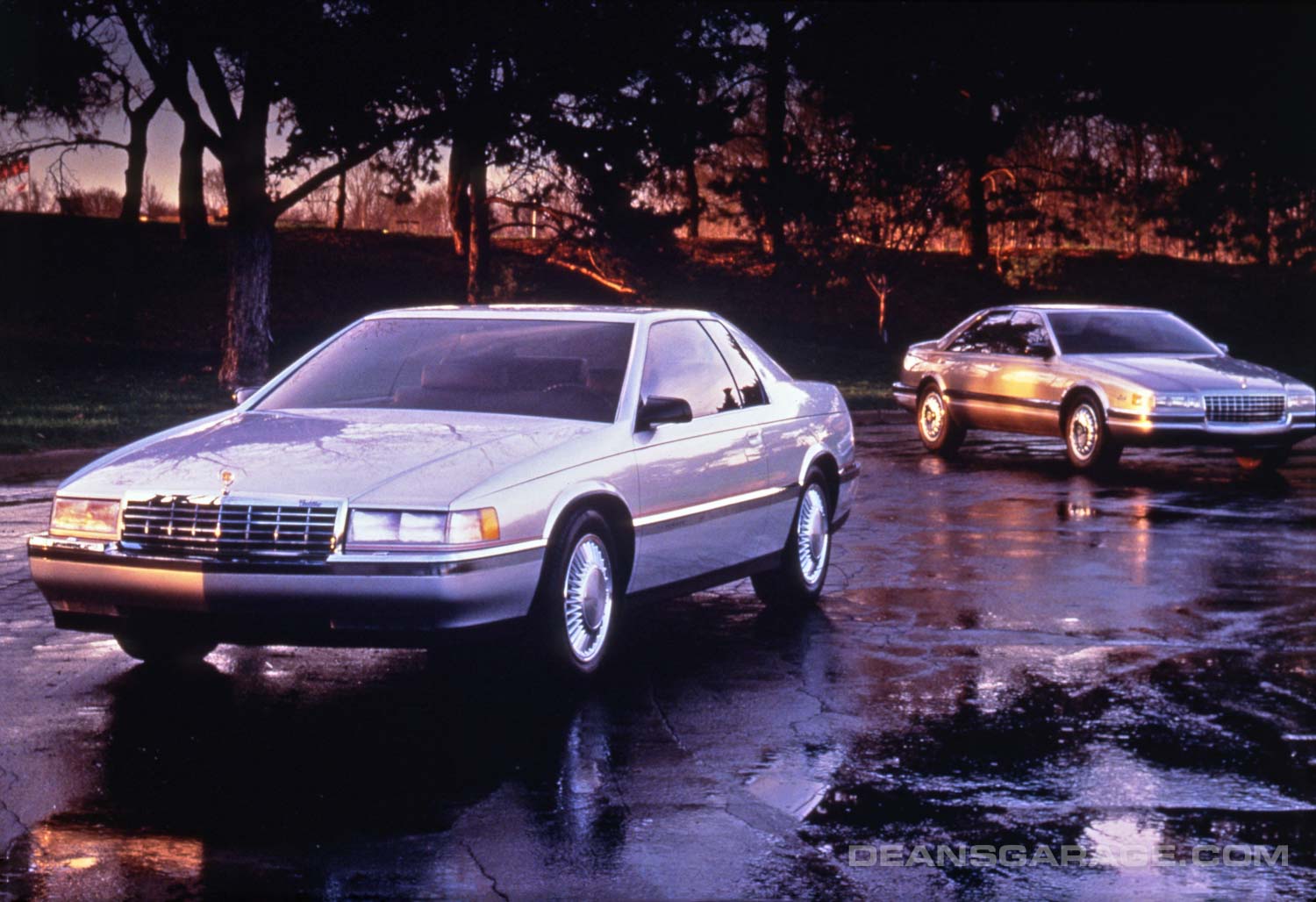
Design of the 1992 Cadillac Seville and Eldorado
by Dick Ruzzin and Dennis Little
Edited by Gary Smith
Part Five—Eldorado Creation
Dick Ruzzin
For over 1-1/2 years, Cadillac Studio had developed a series of Eldorado clay model design proposals in competition with Pininfarina’s efforts.
Chuck wanted us to develop a car without a body side molding. The Pininfarina car had one and every time that there was a Clinic, because of that molding, it would win. We eventually discovered the problem.
Our designs consistently lost in clinics against the Pininfarina car (I think there were three clinics).
It was during this time that a meeting took place that included Cadillac Division, Design management, and Pininfarina. Because of the success in clinics of the Pininfarina design, it was decided that we would take the design from the PininFarina fiberglass model, and adapt the design to our longer clay model. It became a matter of execution—interpreting their design to our clay model that had different proportions. We worked on that clay model for about three weeks. Vertical tail lights came from the Pininfarina design along with a slightly depressed decklid. The vertical tail lights weren’t an issue because we had vertical tail lights on every proposal that we had created.
Clinic Upset
There was a color clinic scheduled to take place in Chicago, and I had to pick a color for the PininFarina fiberglass model that was going to be shown along with the Buick Riviera and Oldsmobile Trofeo fiberglass models. I chose a dark metallic blue for the Pininfarina Eldorado.
The people running the clinic decided on their own to test the Pininfarina Eldorado design, not by itself just for color, but along with the Riviera and Trofeo designs one more time. That was not a scheduled part of the clinic. They wanted to show the three cars together because they felt that something was wrong.
That was the first time that the PininFarina car had been shown with other cars. It failed miserably. As a Cadillac, it was a great disappointment to all the attendees.
Disaster
Along with the Eldorado, Cadillac Studio was also in the early stages of developing the next DeVille, and our clay model was coming along quite well. We were preparing for a major show for the next day in the auditorium. I was putting dimension signs on 20-foot boards.
I was by myself and suddenly I heard someone calling my name. I said, “Over here,” and Chuck Jordan appeared. The look on his face reflected something terrible, and I thought it might be something personal. He called me by my first name, which was very unusual. He never did that. He always called all of us by our last names.
He was in a rush and he came over and said to me, “Dick, a terrible thing has happened. The Pininfarina car bombed in Chicago.” The terrible thing was that now we were without an Eldorado design, already one month late after the release date. Cadillac’s plan with Pininfarina, and all of our plans at design, had all failed. We had nothing.
I remember clearly that I was very relieved that he was not informing me of some tragic event that had happened. Instead, it was about the Eldorado design program. I was glad that it had failed, and it must have shown on my face. I said, “Great!”
Chuck said something that really surprised me. “You mean, after doing all those cars (17 designs), that you want to do another one?”
I said, “Chuck, absolutely. Because it’s going to be a winner.” I had great confidence in that statement. I said, “We’ve done everything that we thought we wanted and what everyone else wanted, and we couldn’t find a good design. Now we’re going to do a design that we really like and want to do. Chuck responded, “OK. Great.” And he walked out.
Marathon Mock-up Session
Dennis developed a plan. It was Wednesday afternoon before Thanksgiving. Two fiberglass models of design proposals that weren’t considered strong enough were moved to into an empty room on the first floor.
I had scheduled vacation on the day after Thanksgiving. (At that time we still worked on the Friday after Thanksgiving.) I would be back Monday morning.
I told Dennis that I’d cancel my vacation, but Dennis said, “No, you go. You will not have seen anything that we’re going to do when you get back on Monday. So you can review what we’ve come up with, and then we’ll put the final car together.” I thought that made a lot of sense. What Dennis had proposed would eliminate any emotional attachment that I would have to any of the design work that was going to be done.
This was the last chance. Crunch time. It was like two trains running wide open coming together on the same track. Something had to happen.
Monday Morning
I walked into Cadillac Studio on Monday morning. I wasn’t sure what I would see, but I expected the work that had been done to be there. But Dennis had the wisdom to keep the proposals hidden from both Chuck Jordan and Dave Holls so they couldn’t see what we were doing until we were ready.
I went downstairs and there were the models. Dennis and Scott Wassell were already there. Larry Erickson and Gary Smith were also there. They were all making final adjustments.
The two fiberglass models were mocked up with paper, cardboard, painted plastic, foam core, pins, tape—anything available that could help the express the new design. This was a mock-up technique that the designers had developed, and they were really good at it—creating an impression of a design, full size, that you could evaluate from 20 to 30 feet away. These were serious design proposals that could be clearly and easily evaluated and judged.
The fiberglass models with the mock-ups were really starting to look good. Len Casillo came into the room to take a quick look, and I’m sure he reported to Chuck and Dave that we were making good progress.
Larry had suggested many times that the car needed a line below the belt, but different than the Seville that we already had in the release process. I did not want the two to look alike in any way so I had resisted in doing that. But we added Larry’s line and it really worked.
For the first time we had something that we really liked ourselves. We started to interpret the mock-ups on our clay model later in the day in the Cadillac Studio. I spoke to Ray Hildebrand (Chief Modeler) about the possibility of using the clay wind tunnel model as the new release model to save time. He told me that the wind tunnel model was very accurate and could be used. That was important because it meant that we did not have to re-interpret the car again on the original release clay model that had the developing Pininfarina design.
After all of the false starts, all of a sudden the design that we were putting together from the different pieces from the other two was really starting to look good. For the first time we had something that we really liked ourselves.
The wind tunnel clay model, draped with mock-ups, was set up in the platform to be developed. Chuck and Dave both visited and really loved what we had. We were on our way. Larry made copies of images of the model while it was still downstairs and proceeded to tune them up with sweeps to make the design more easily understandable. They were placed on an easel close to the clay model and that really worked as everyone that saw them could clearly see what we were doing.
We started working on what would become the final Eldorado model 24 hours a day. A lot of people came in to help. We split the studio staffing into two shifts. Each worked 13 hours so that they overlapped. We worked about four days that way. I think both Dennis and myself put in a couple of 18 hour days.
So that mocked-up design created at the last minute became the final design. Once translated into clay, it was taken outside once, finalized for release, and sent to the plaster shop to be cast—all in 11 days. It was totally unheard of that a car design would be created, released, and sent to be cast in that short of time. I am sure that had never happened before in GM’s history.
I sent a letter to the shop thanking them for all the work that they had done in supporting us. Cadillac Studio was at that time the number one priority in the building and the shop service was exceptional. The letter also mentioned the work the shops did creating a fiberglass model of the Seville design in 14 days.
A major corporate product clinic that was coming up was re-scheduled so that our shop could finish both the Seville and Eldorado models. At the clinic the Eldorado and the Seville were at the end of a long line of new GM products that were coming out. They looked terrific. They received the highest marks of any car in the clinic with the Seville slightly surpassing the Eldorado.
A woman that was in attendance remarked: “I will never own a Cadillac, but if I could have one, I would have one of these. The Eldorado looks like it’s made from a single piece of steel—the whole thing.”
The 1992 Eldorado would be built for the next 12 years—the longest production run in GM’s history except for the C3 Corvette.
Epilogue
A funny story. We took the new Eldorado clay model dinoc’d silver outside to review on the patio for its only outside review. It was about 5 o’clock on a below freezing December afternoon and already getting dark. For the first time the studio saw an Eldorado design that we all really liked.
The movers brought the uncovered model out of the building. As they were setting the model on the first turntable, suddenly the clouds in the west parted and a beam of light came through and shown on the model. The clouds that had parted revealing the sun were very low, far away on the horizon. Yet this tiny beam of light came and rested on the Eldorado. We were all absolutely stunned into silence. Lenny put his fingers up, his two forefingers to make a cross, something like what you see in a Frankenstein movie, and he said, “It’s a sign from God.” At that point in time that was not hard to believe at all.
Dennis Little
The dust had barely settled with the Seville when the studio would now focus on the next unsolved design, the Eldorado. The Pininfarina Design group also searched for a design. The studio would execute at least seven full size models—some made into dummy fiberglass models in this exhaustive design search.
The studio designs were not being accepted. Chuck approached me one day and proposed that he would make available to Larry and me an empty room on the first floor with the purpose of doing what we did with mock-ups for the Seville in order to try the same approach with the Eldorado. Chuck knew just as I knew that there would be no guarantees of success. Fiberglass models were shipped to that room along with supplies that we might need to execute mocking up the new design.
We spent two days searching for the next Eldorado—Friday and Saturday after Thanksgiving. We felt confident that the design we had created with the mock-ups was worth executing on as a full-size clay for presentation to Cadillac marketing. Once Cadillac Management was shown the studio’s design proposal, they felt very confident.
The shops pulled molds off the master clay models and fabricated dummy fiberglass models that would be used both by marketing for clinic research and advertising photo shoots. Both the Eldorado and Seville designs scored well as a new future product for Cadillac. The data would show that the younger buyer was receptive to these new cars even though they were still hesitant about purchasing a Cadillac. This was considered a win because previous clinics had shown that the response of younger buyers towards Cadillac was not positive.
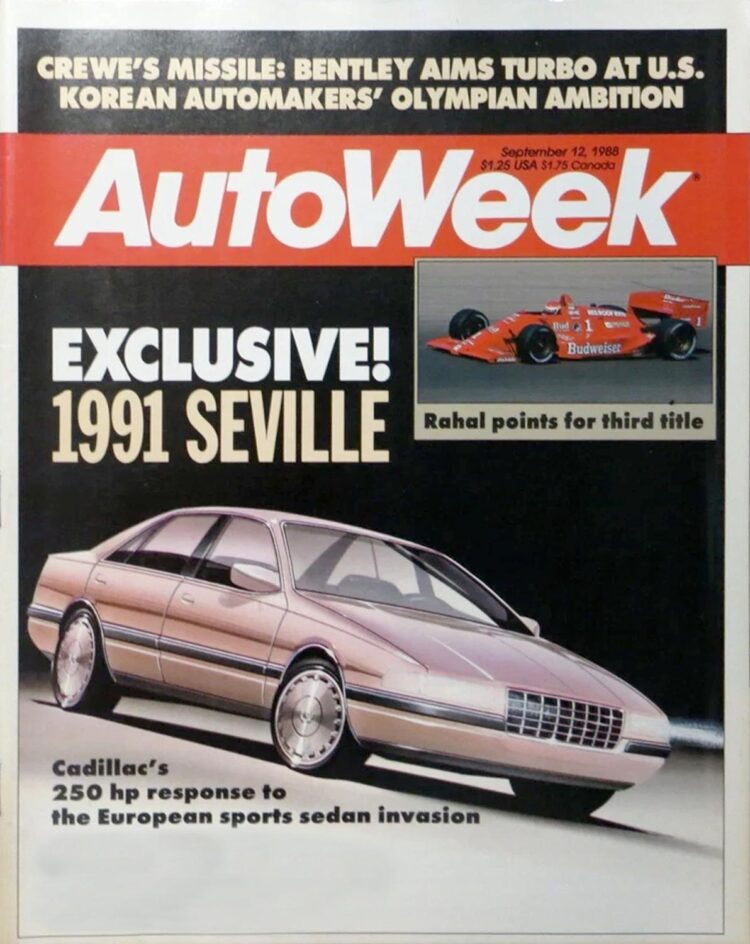 Chuck Jordan and Keith Crain
Chuck Jordan and Keith Crain
I was working with a sculptor on some design adjustments on the master Seville clay when the back door of the studio opened. Chuck with Keith Crain entered the studio. Keith was owner of Crain Communications that published Autoweek and Automotive News, the leaders in business communication for the auto industry worldwide. Design staff is a secure building allowing only a select audience to have access into the studios. What was Chuck up to by bringing Keith into Cadillac Studio? I believe that there were two scenarios at play from this visit. Keith and Chuck were very close; Chuck was very proud of the new Seville and Eldorados, and he wanted to show off the designs. I can only assume that John Grettenberger was consulted about what might come from this visit to the studio and approved it.
Shortly after this visit, Autoweek would have an artistic rendering of the Seville on the cover of the September 12, 1988 issue of the magazine with a featured article about the future product. This would be the first time the public would be exposed to the new direction for Cadillac. There was concern internally within Design as to how Autoweek was able to get a studio photograph of the Seville master clay model. In the days that would follow once the Autoweek cover story broke, there were many questions asked with no conclusive evidence as to who leaked the photo. But it ended up that the article was a plus for Cadillac.
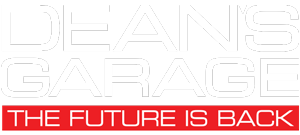
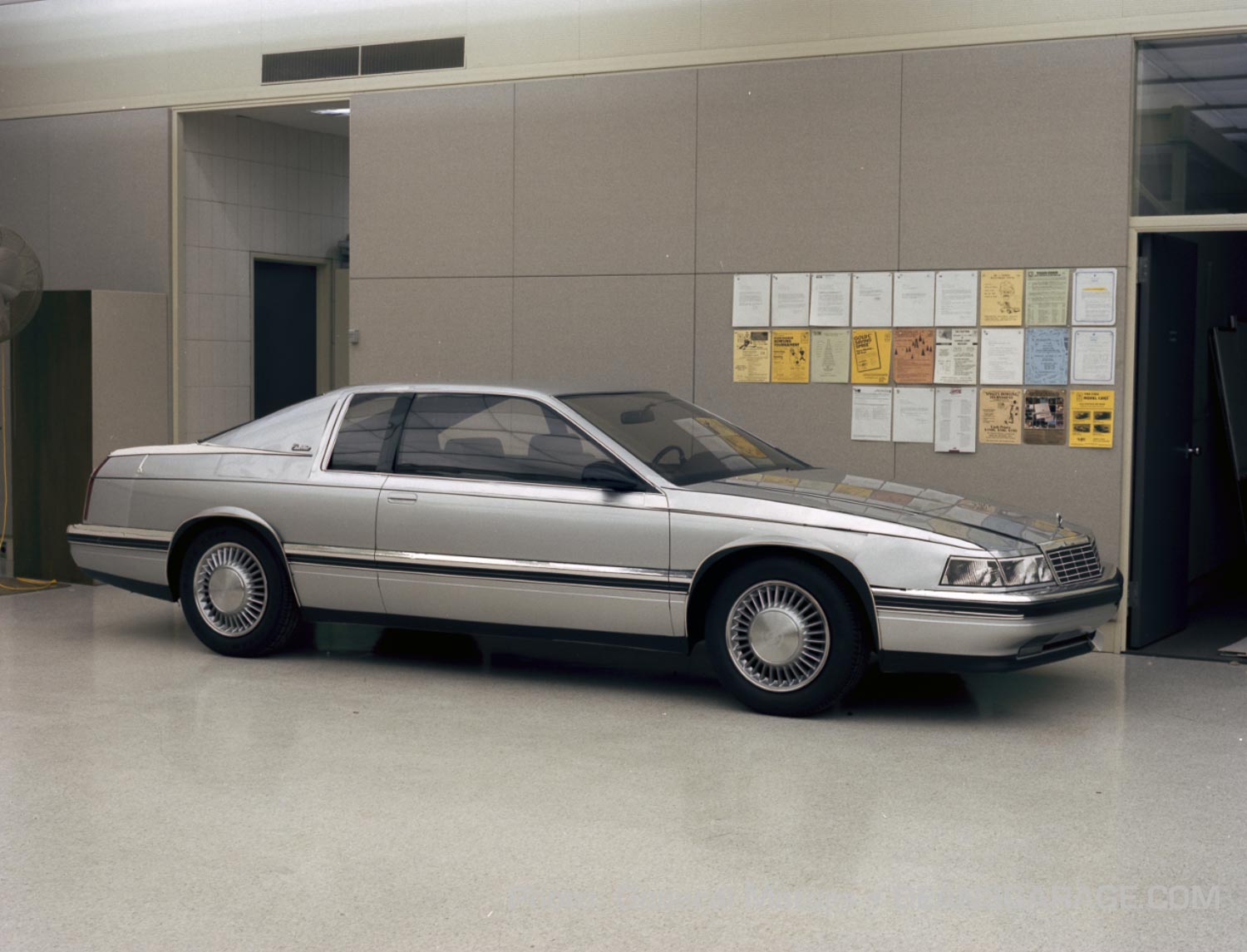
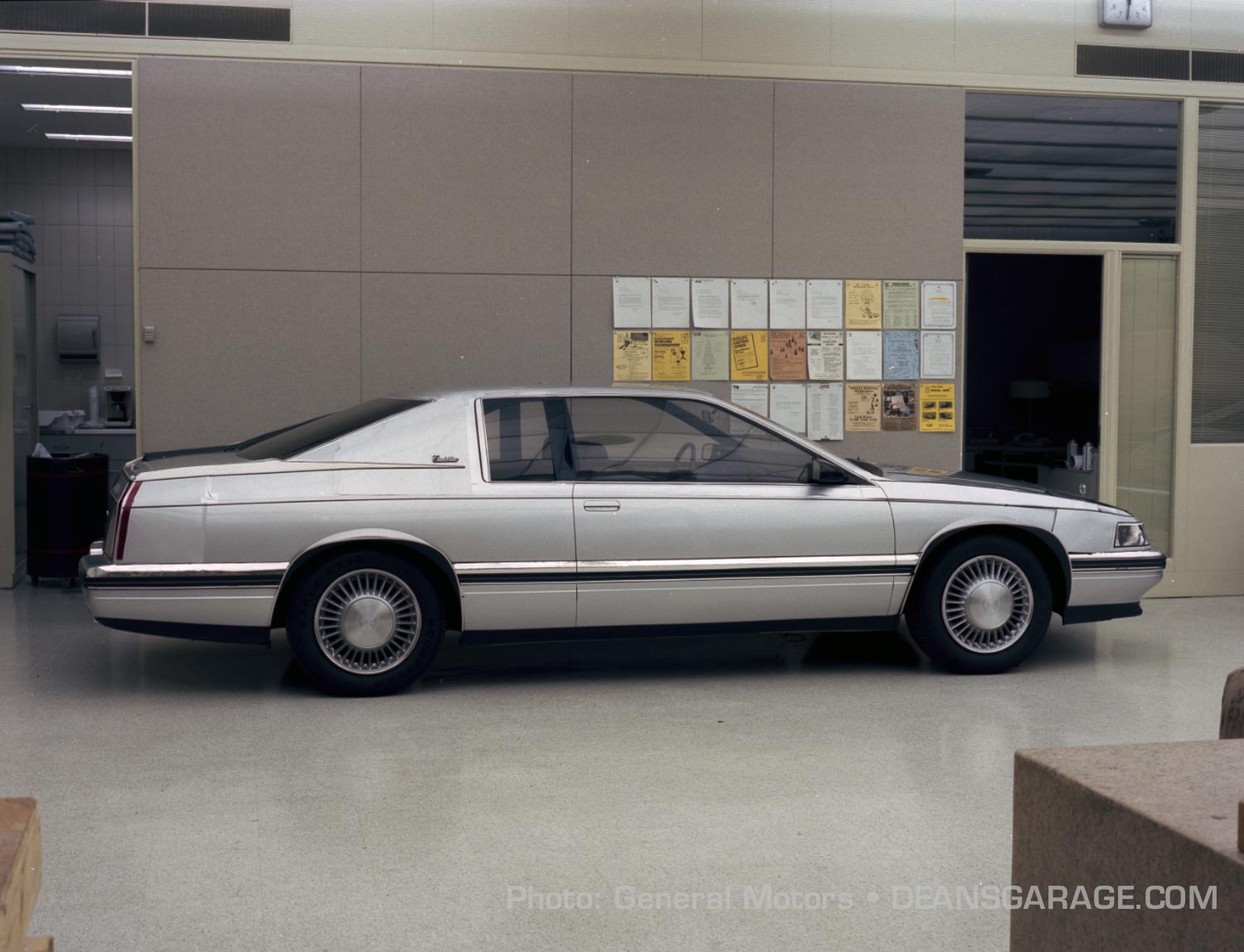
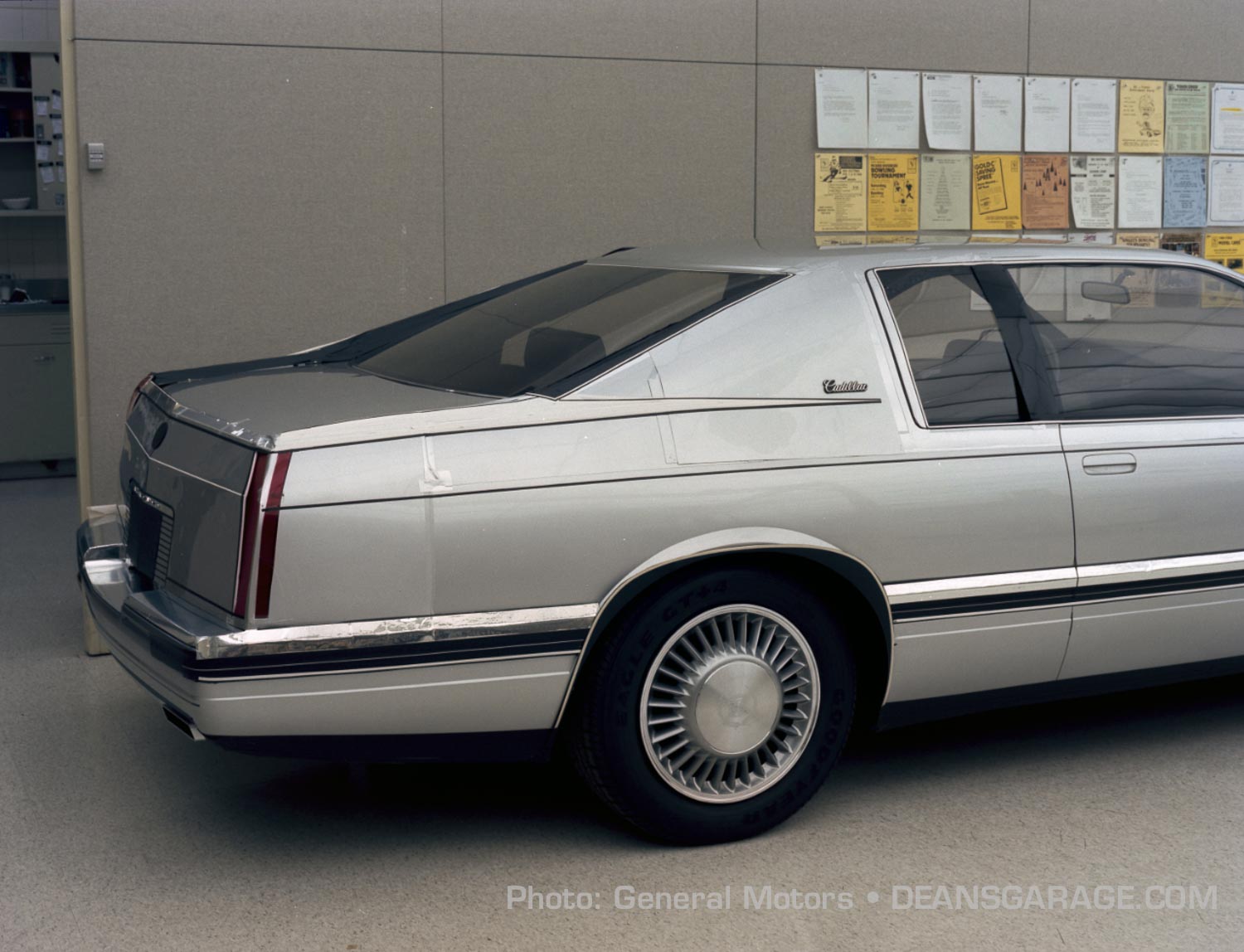
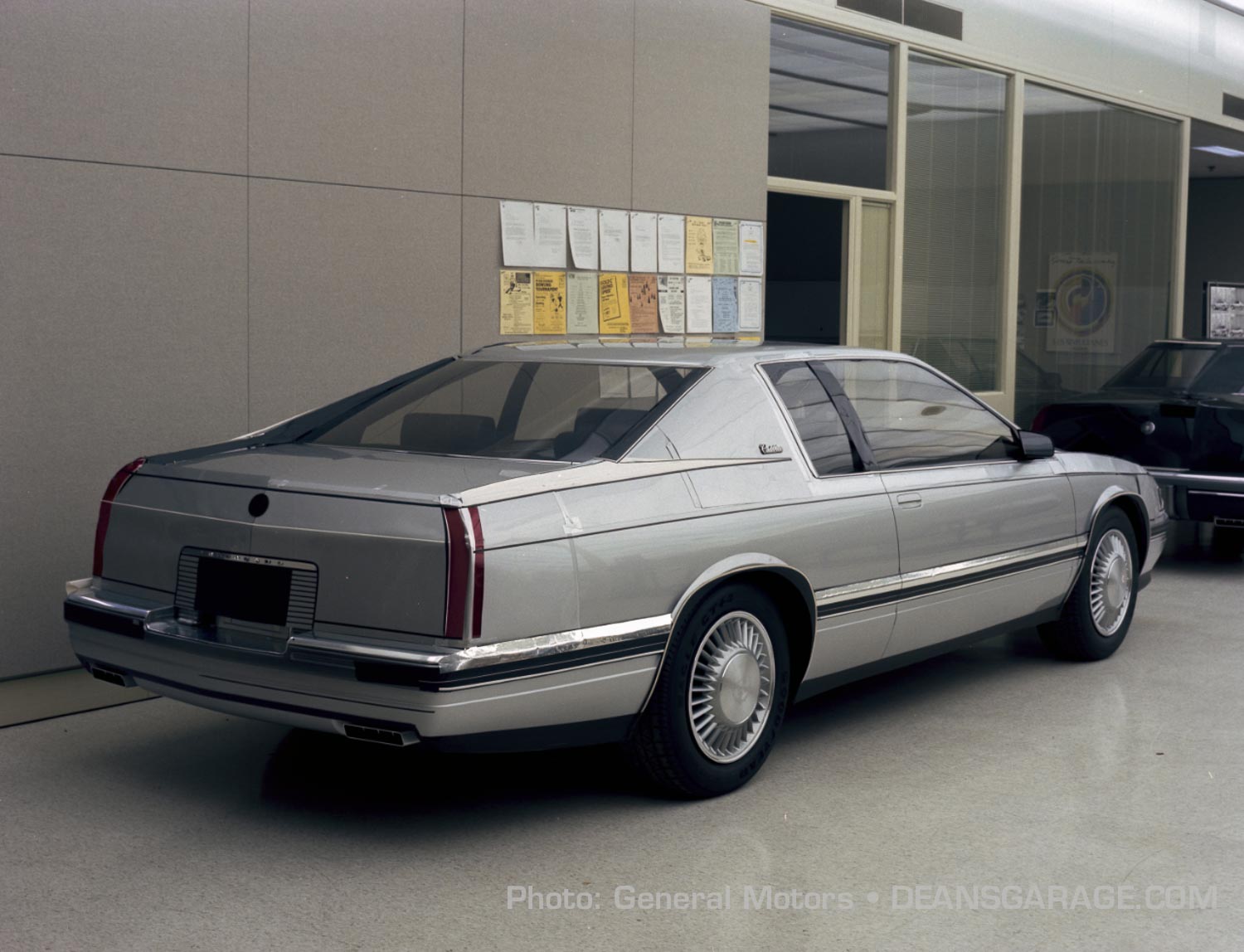
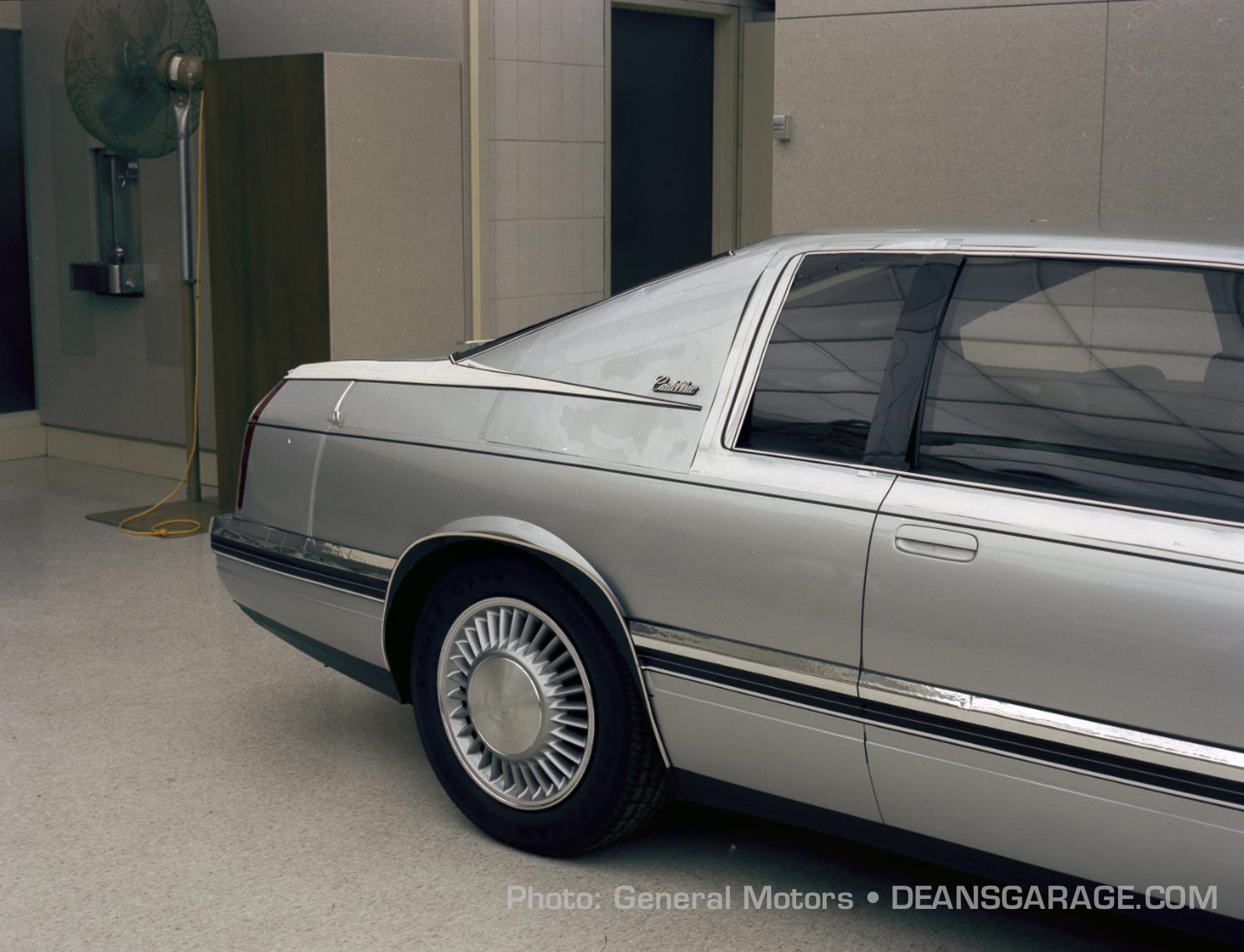
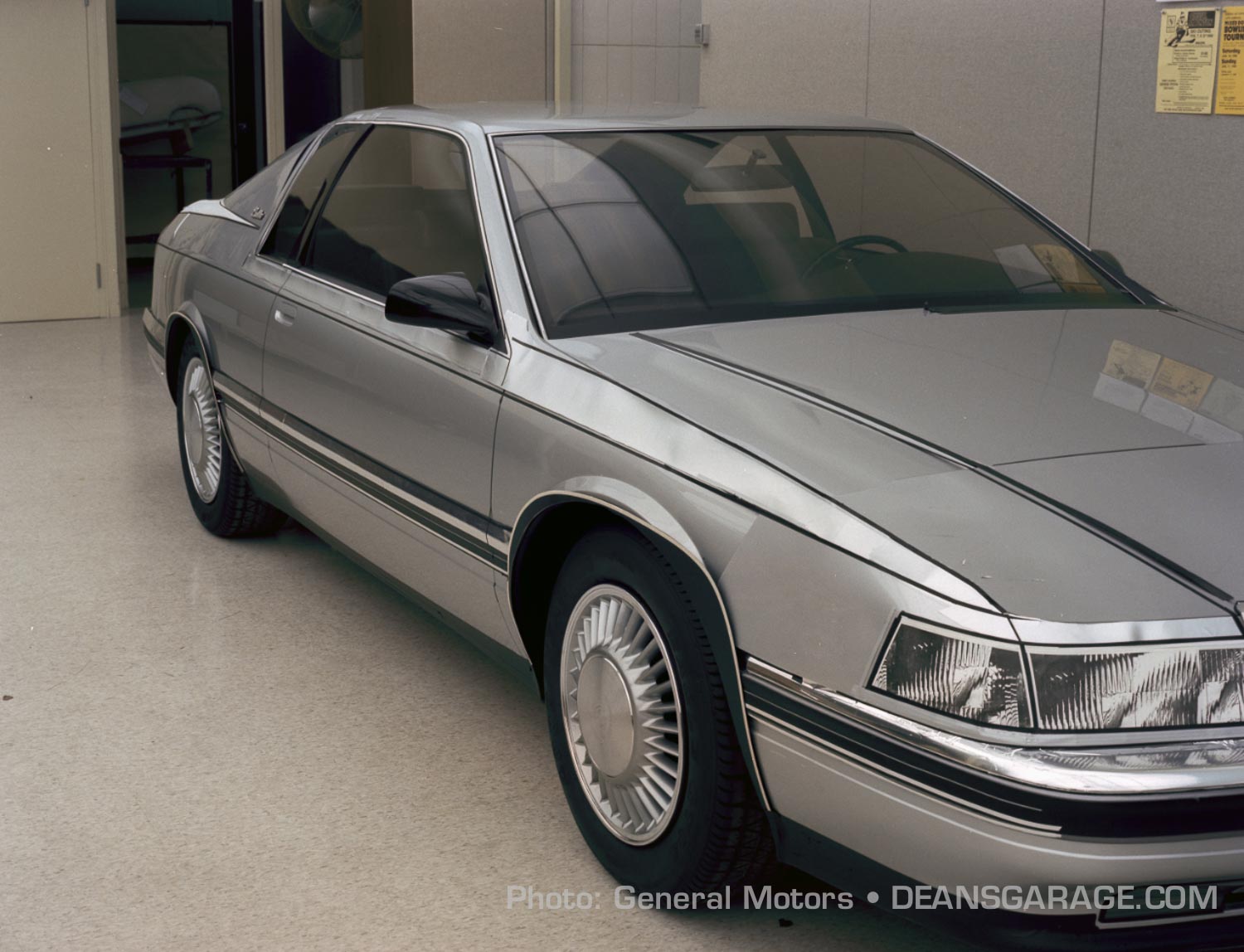
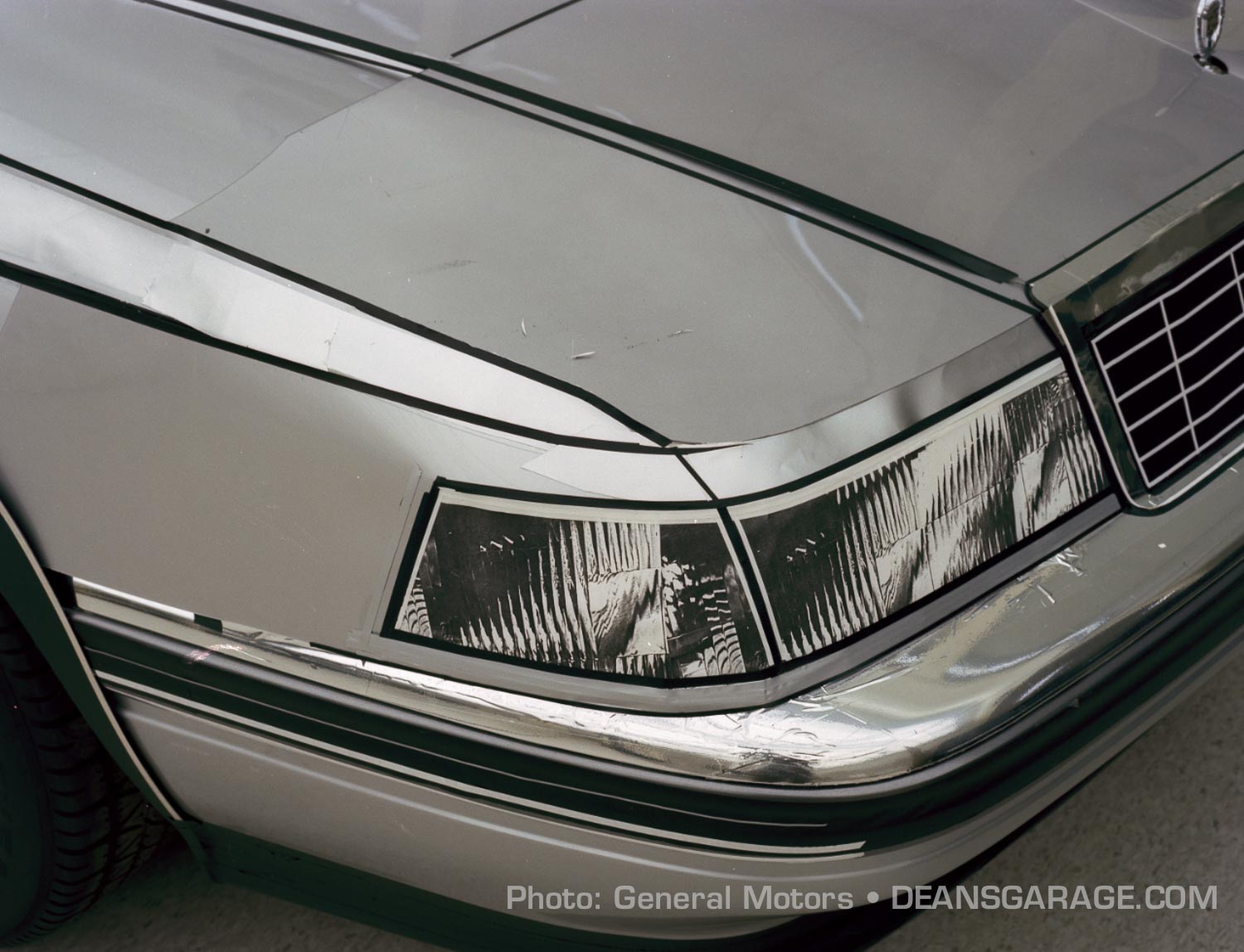
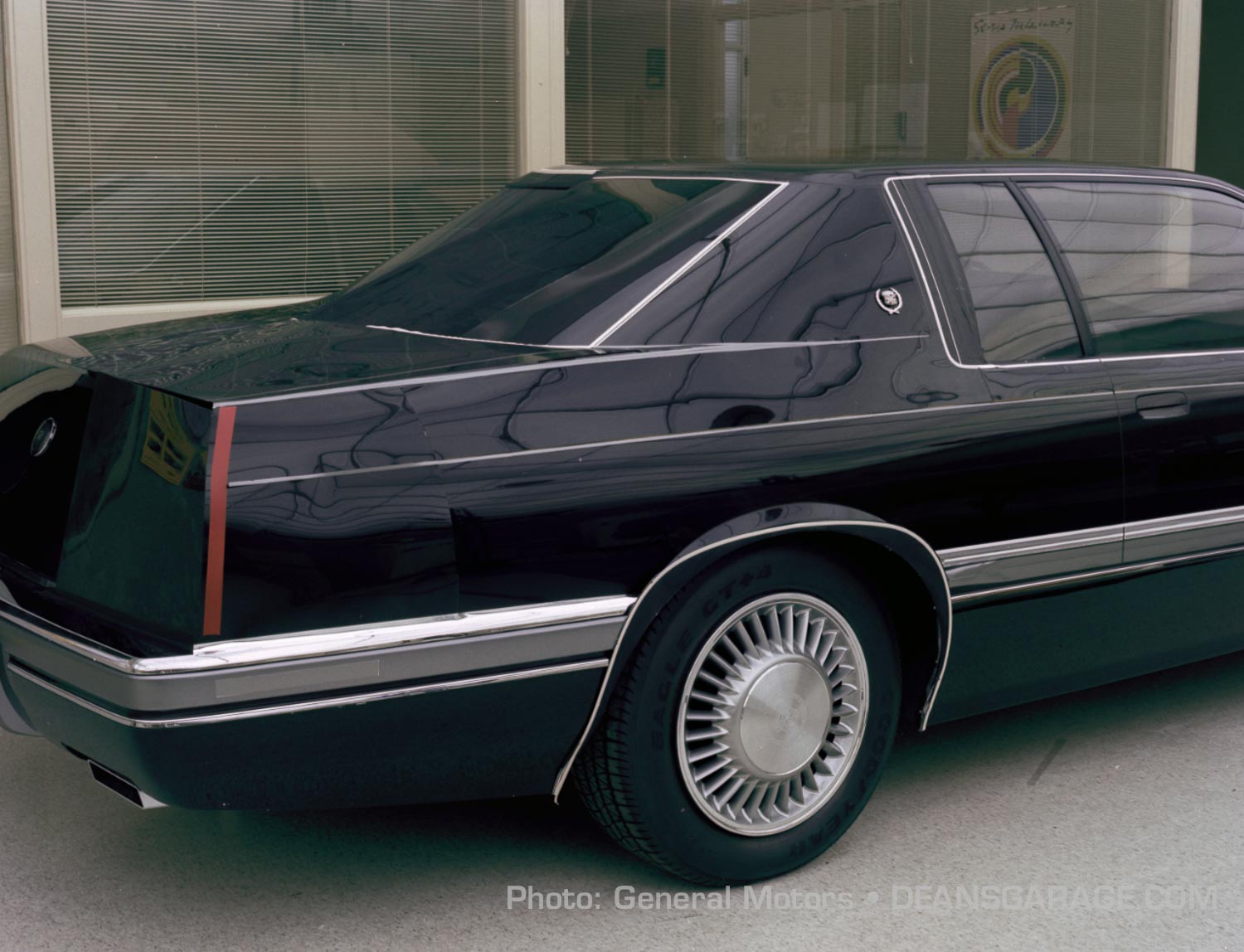
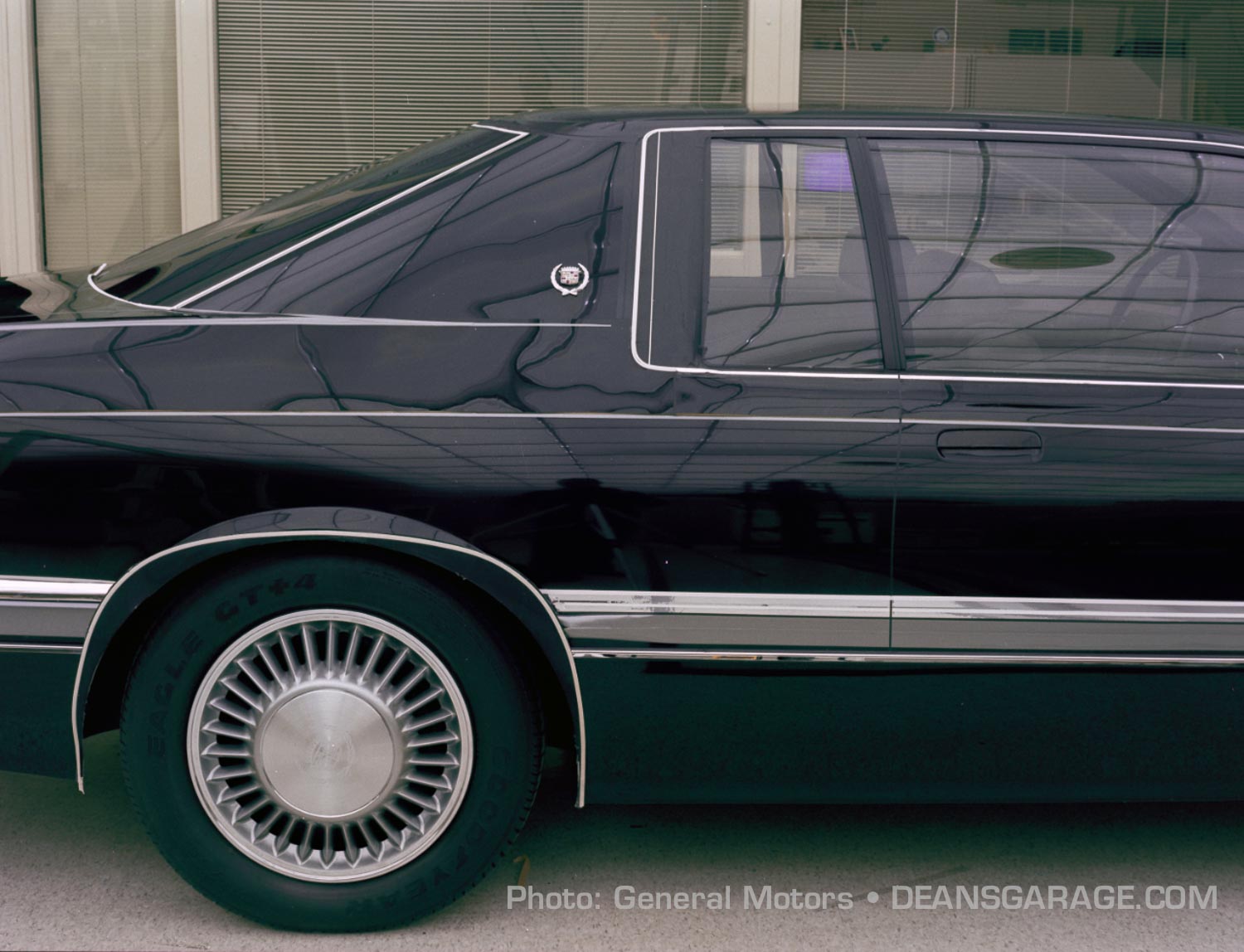
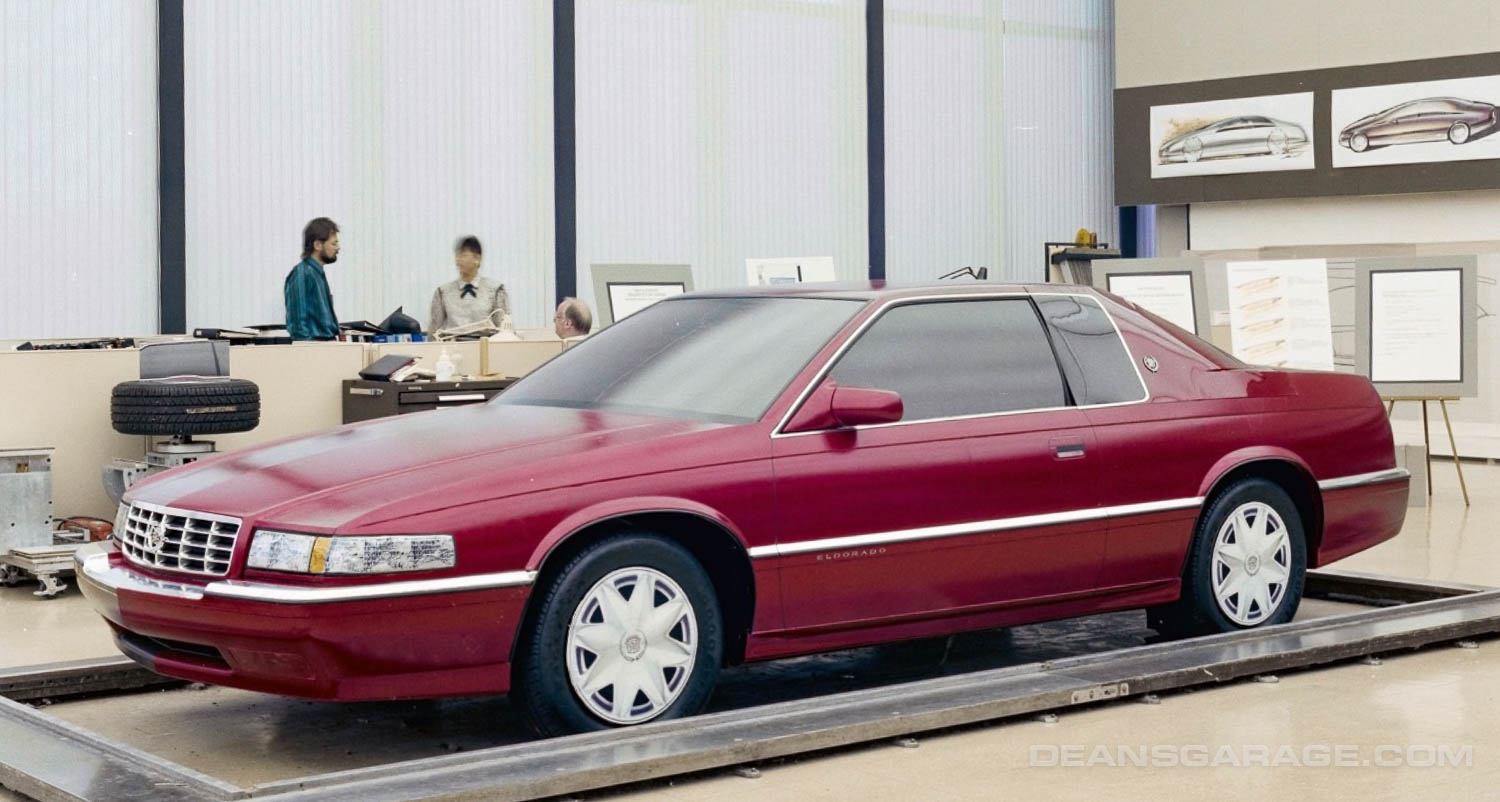
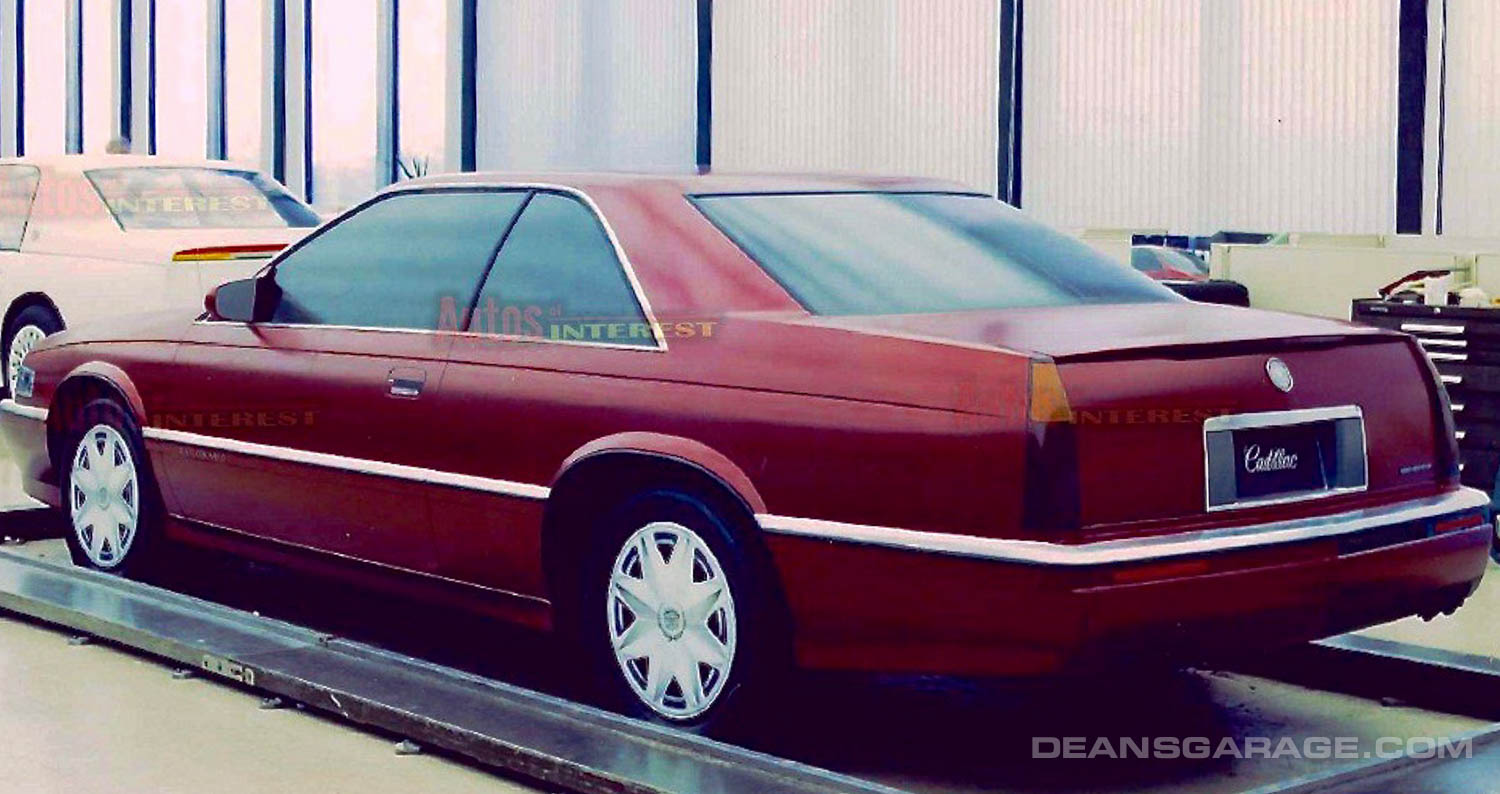
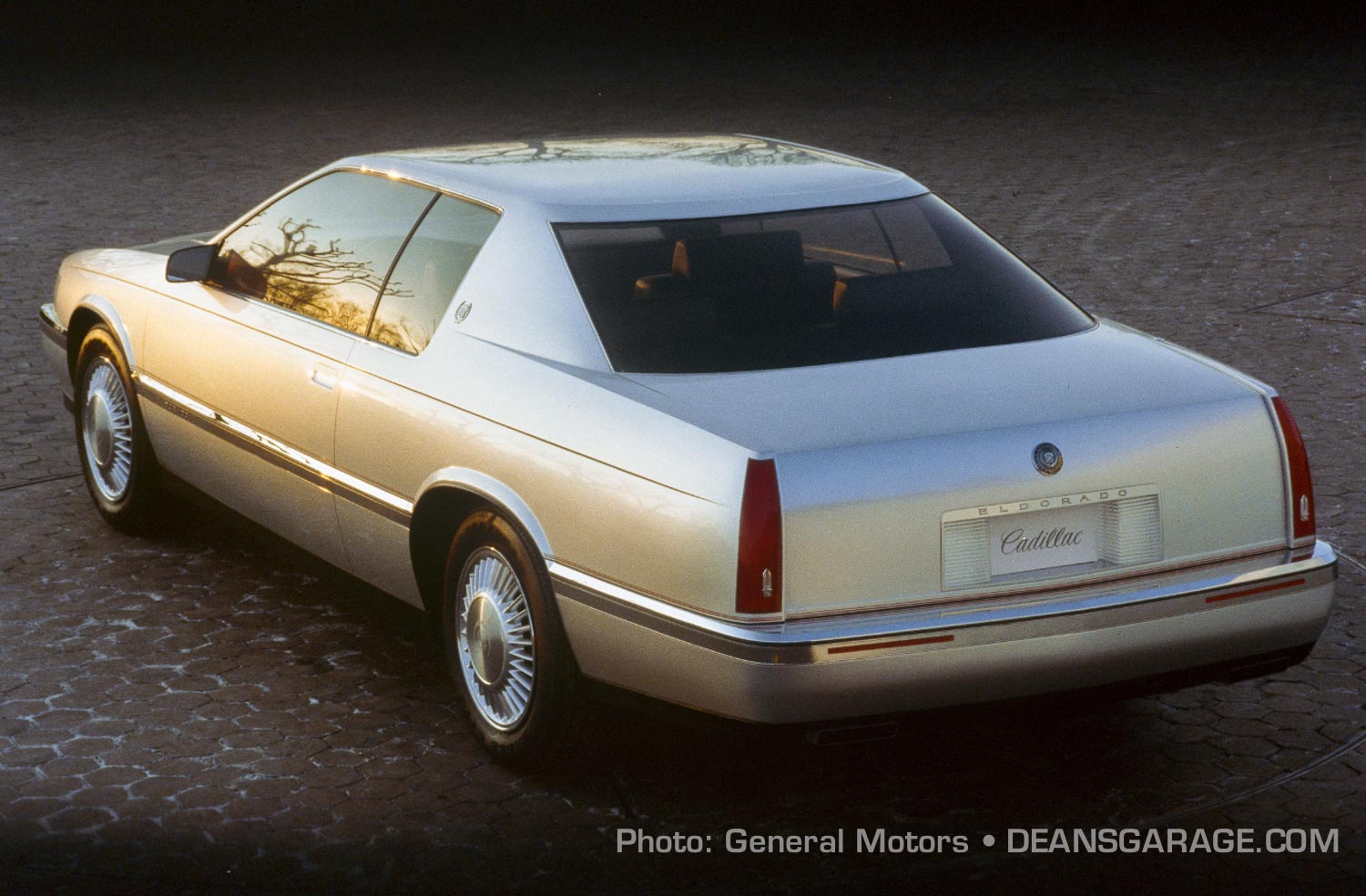
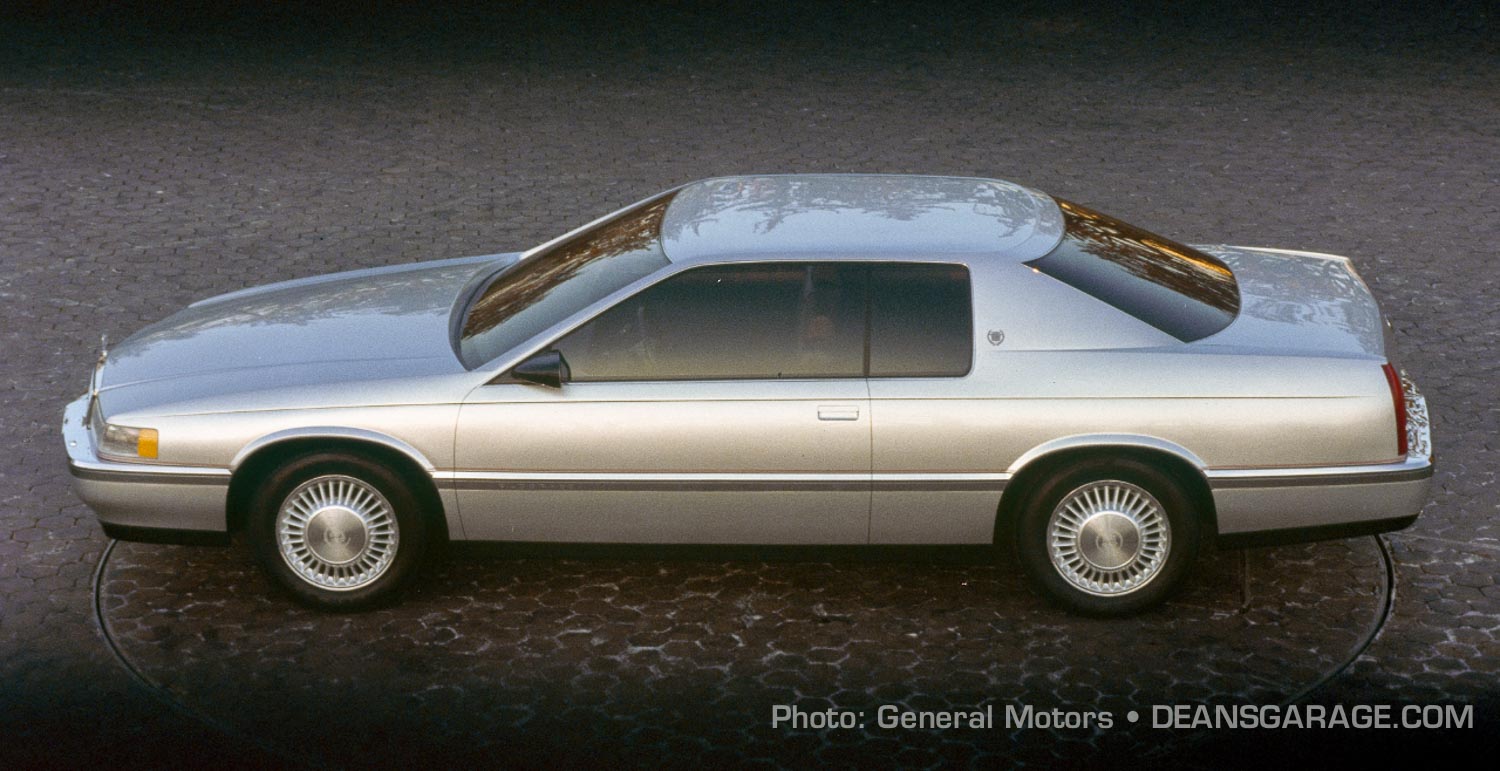
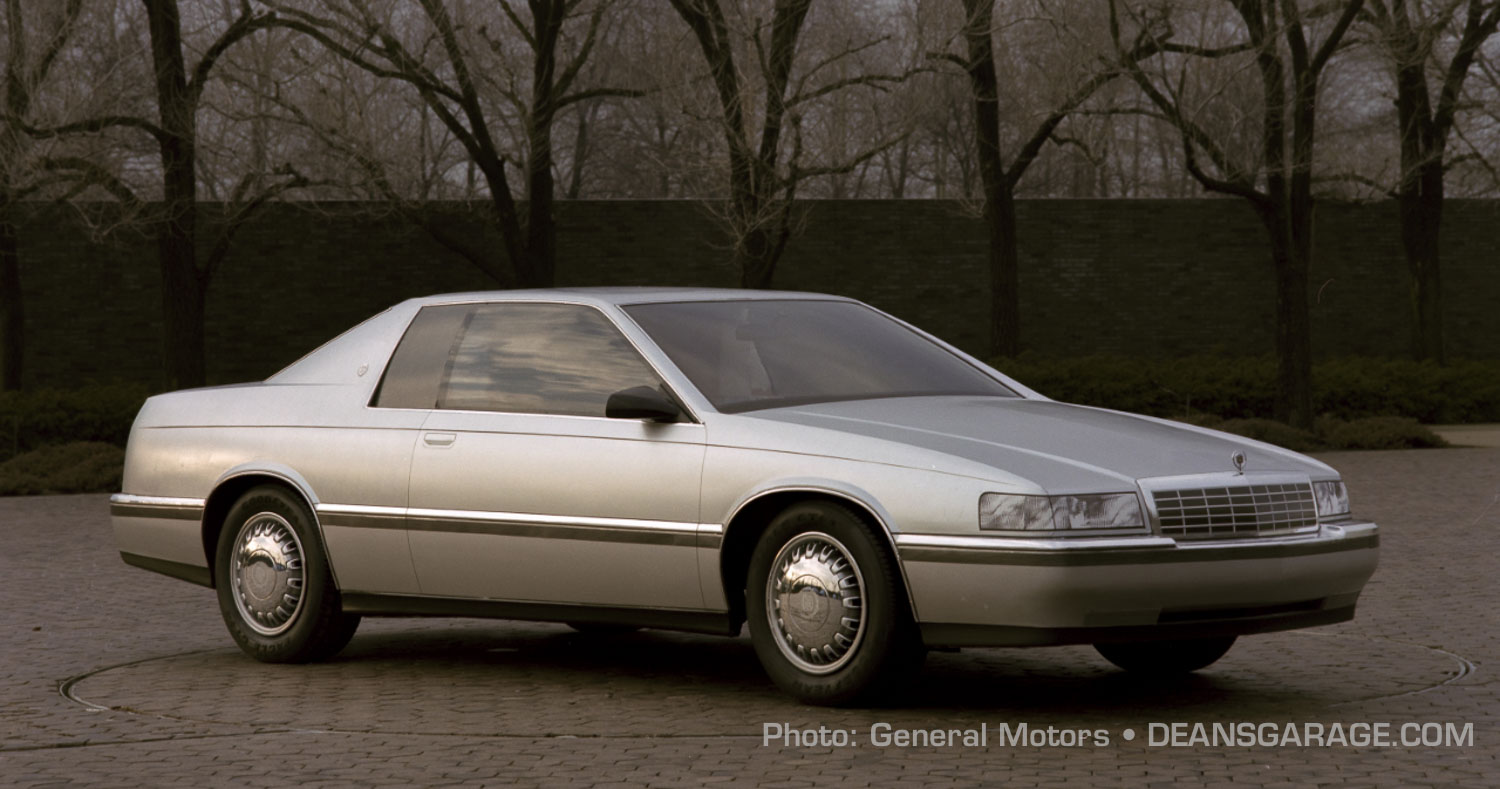
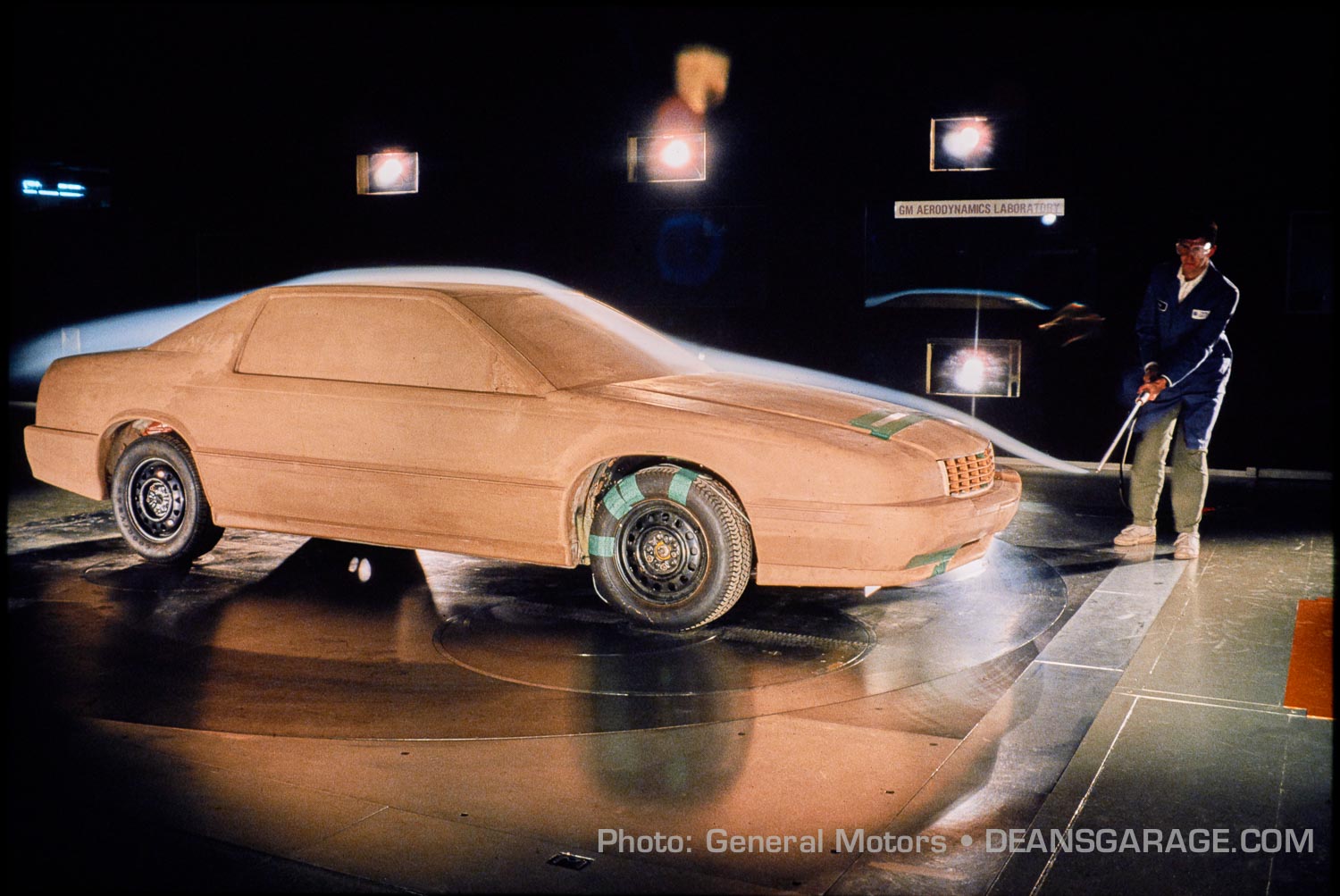
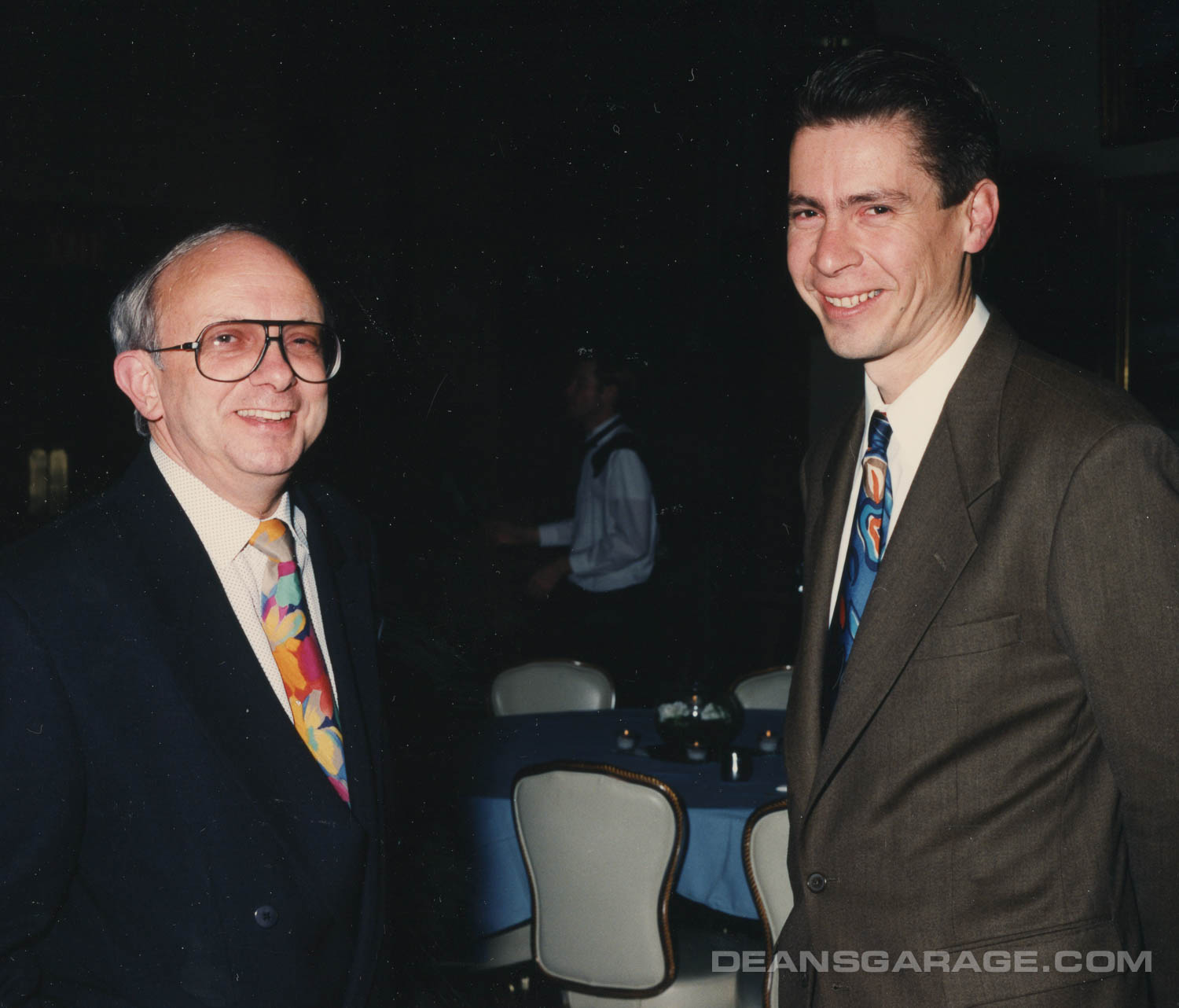
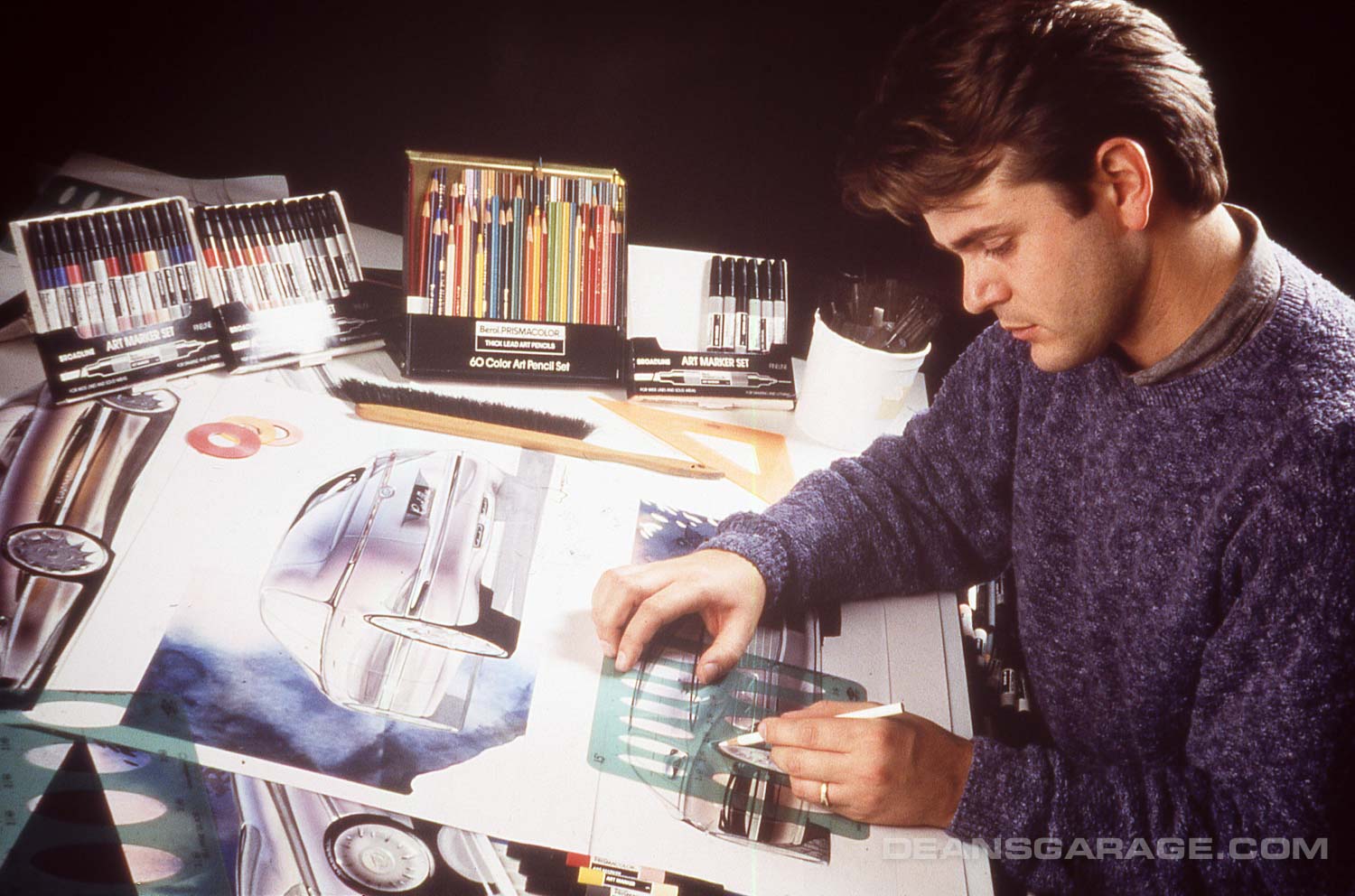
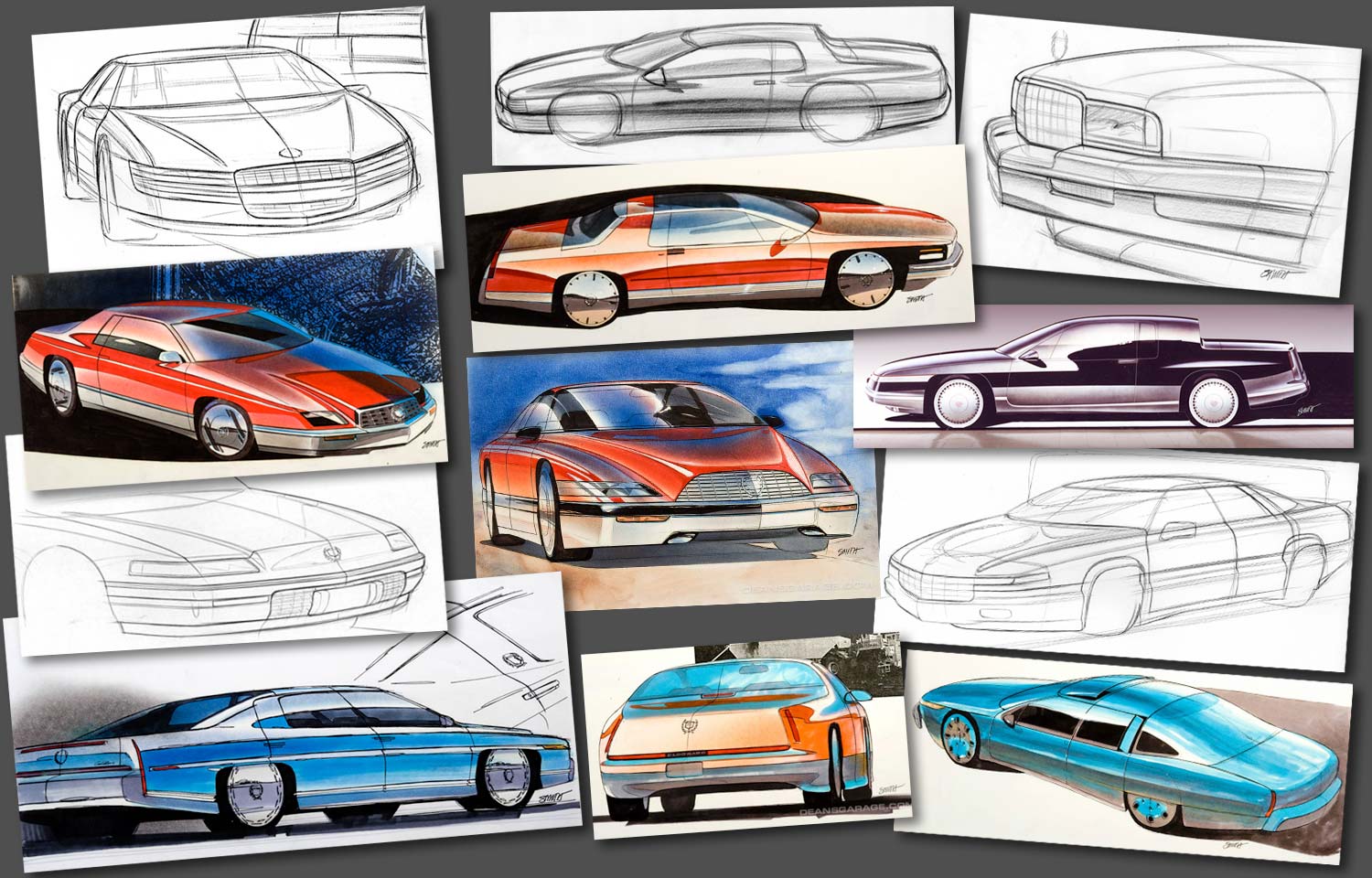
WOW, breathtaking story about the birth of a concept out of the ethereal air of a collective design and fabrication team. Automotive intensity and excitement at its best. Almost like creating an Oscar worthy movie with a cast of extraordinary team members all pulling together in a magical symphony.
At the time during this process I worked at ASC International Design Team. I had the pleasure of working with the extraordinary talents of Dick Ruzzin. Exacting, professional. Larry Erickson; humble, low key extraordinarily
gifted designer. Dennis Little, absolutely talented and really low key talented designer to work with. Of course Chuck Jordon did not take any hostages. You had to be on your game. Every detail of anything had to be world
class. Just an extraordinary design leader and legend.
The fabrication teams at GM were world class and second to anybody in the world.
Anyhow, Dennis, great, wonderful behind the scene story of the design evolution of automotive design magic.
Thank you
Chris Dowdey, ASC Design
Interesting article.
Love Gary’s sketches: Lots of new and interesting design ideas all presented in appealing illustrations…especially liked the outline pencil drawings.
What a talent.
Thanks, Roy.—Gary
It’s interesting to look back at some of the work that was done then, at that time, and how you really can’t get an idea of what the final answer should be is until you have a collective impression of different people’s thoughts. Chuck Jordan and Dave Holls did not grow up with the challenge of aerodynamics. Chuck never wanted any complexity to be involved in a program. He would avoid that like the plague. Dave knew a lot about aerodynamics, but really had no practical experience. He studied what was done in the 30s and was an expert of that. The big breakthrough came in the early 60s when aerodynamicists had to decide whether air should go over the car or under it. The Seville and the Eldorado were both very low drag cars in spite of the big V8 engines and large radiators. Longer and heavier than the previous small cars, the result was 4 miles per gallon better. Nobody cared about it, the most important thing was that they looked good.
This is a great story. Thanks. Russinoff once said, ” If you made this process into a movie, no-one would believe it”. True enough!
This is the type of thoughtless car design that eventually drove car washes to discontinue cleaning seats, inside glass, floors and door jambs: it’s too much trouble, takes too much time and is plainly impractical. It’s another nail in the coffin of ergonomically functional car design.
There comes a moment in evolution when something just cannot be improved upon further. Stuff like this reminds me of simpler cars, like (and this is strictly random) the 1959 Ford Fairlane 500’s “Full Circle Visibility”, before valued considerations like entry and exit room, head room, leg room, hip room and foot room went the way of glove boxes, instrumentation, vent windows and fold-down seats.
And we cluck our collective tongues and wonder why more and more people are lamenting decisions to get rid of their previous cars.
Can we ever learn from our mistakes?
I remember when the Seville was rolled out. It’s earliest prototype was seen in the 1939 John Wayne movie, “Stagecoach”.
The Seville debacle’s $45M loss to GM is minimized by saying, ‘the dust had barely settled’. What if Robert McNamara had summarized the Edsel’s $250M loss by saying, ‘when the breeze subsided’?
By contrast, recall industrialist Henry J Kaiser’s humble observation, “I expected to throw $50 million into the automotive pond, but I didn’t expect it to disappear without a ripple.”
What a wonderful series. I only wish the photographs were numbered and keyed to the text; it’s impossible to correlate the two without an identifier. Still, though: great series.